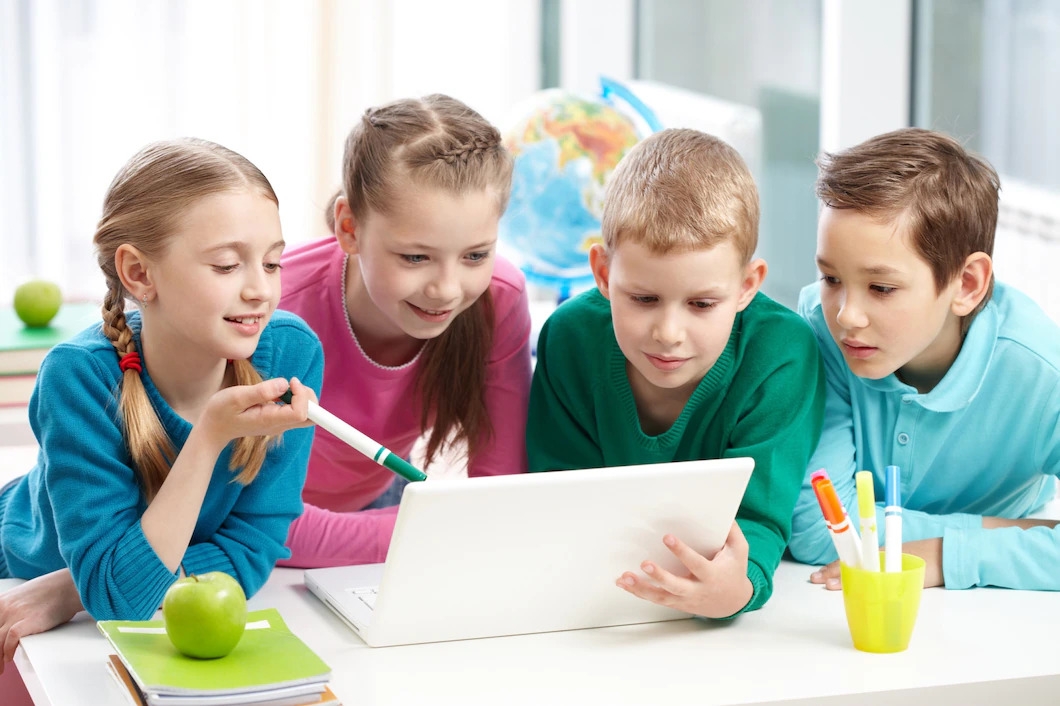
Technology has revolutionized the way people communicate and interact with each other. Teachers
use technology to supplement teaching methods and create engaging educational experiences for
their students. Students use technology to stay connected to their teachers, classmates and family
members. In addition, they use technology to conduct research and keep records of assignments.
Every classroom today has at least one digital device such as a laptop or tablet. Students use these
devices for communication and collaboration in the classroom. For example, a teacher can contact
students individually or as a group to ask questions or discuss lesson plans. At the same hand,
students can contact their teachers with questions or assignments via email or text message.
Digital devices make teaching easier and more effective than ever before, such as:
1. Smartphones
Smartphones have become ubiquitous in our society. In fact, many people now consider them to be
an extension of their own body. As smartphones continue to evolve, they are becoming increasingly
powerful and useful tools for educators. Students can use these devices to access educational
content, communicate with peers, and complete assignments. Educators can use these devices to
create lesson plans, collect data, and engage students in meaningful learning experiences.
2. Tablets
Tablets are similar to smartphones in that they are portable computers that allow users to access
information and perform tasks. However, tablets are much larger than smartphones and are often
used for reading books, playing games, watching videos, and browsing the web. Many schools are
beginning to integrate tablets into classrooms as a way to enhance student engagement and
increase student achievement.
3. Chromebooks
Chromebooks are laptops that run Google's Chrome operating system. These laptops are
inexpensive, lightweight, and feature a simple user interface. Because Chromebooks do not require
a physical keyboard, they are ideal for mobile learners who need to take notes, write papers, and
complete assignments while on-the-go.
4. Laptops
Laptops are desktop computers that connect to a monitor, mouse, and keyboard. Most laptops are
designed to be carried around and used anywhere. Laptop computers are great for completing
homework, writing papers, taking notes, and accessing online databases.
5. Projectors
Projectors are small screens that project images onto a wall or screen. They are commonly used in
school settings to display presentations, PowerPoint slides, and other visual aids.
6. Digital Cameras
Digital cameras are small, handheld devices that capture digital images. They are commonly used to
record events, document activities, and share memories with family members.
7. Video Conferencing
Video conferencing is a method of communication where two or more individuals interact using
video equipment. It is commonly used in business settings to facilitate meetings between employees
located at different locations.
Teachers have also adopted digital resources to stay connected with their students and conduct
daily business. Email is a common tool used by teachers for communication with students and
faculty members. In addition, apps such as Google Classroom, Zoom, Microsoft Meet etc enable
teachers to manage their class assignments and prepare lessons on their computer before handing
them off to students via digital devices.
Digital recording tools enable teachers to record lessons and assess student progress in real time.
This way they can respond promptly to any issues or concerns students may have.
Student involvement with technology has also become much more advanced over the years.
Smartphones allow students access to the internet at any given time. The internet allows them to
stay connected with family members and maintain regular correspondence with teachers.
Most importantly, social media has revolutionized young people's ability to connect with each other
via social networks such as Facebook and Twitter. This allows them to share information, make
decisions and meet new people with similar backgrounds as theirs. All in all, modern technology has
given us a lot- but it's up to us as citizens to responsibly use it in positive ways.
Technology has revolutionized the way we live our lives- from education to everyday business
transactions. Students use digital devices for communication and collaboration in the classroom,
while teachers use them for keeping records and conducting daily business.
Furthermore, digital tools have made it easy for teachers to connect with their students and
develop effective lessons. Technology has transformed our everyday life- but it's up where we've
used it responsibly that things have gone very well indeed.